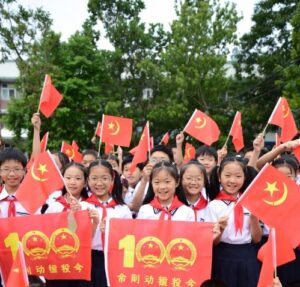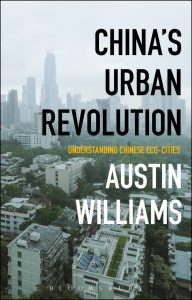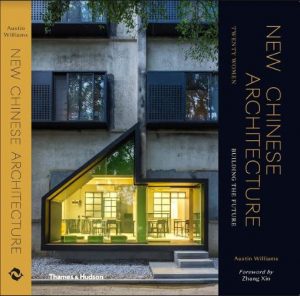The birth of the Chinese Communist Party

by Austin Williams
On 23 July 2021, the Chinese Communist Party turned 100. Much of the coverage of the event in the Western press focused on the centenary celebrations in Tiananmen Square on 1 July where hundreds of thousands waved flags and sang “Socialism Is Good”. There were hints that a new collectivist communist revival is underway. The state’s use of the vast square is always a show of strength. But this was more than just a state-sanctioned, sanitised, and stage-managed jamboree.
In China, the name of Tiananmen Square has long been exorcised from social media. The anniversary of the massacre in 1989 regularly coincides with internet outages, and words like “anniversary”, “commemoration” and “6/4” (4 June) are blocked. The character “占” (meaning “occupy”) is doubly banned because it looks like a tank. Last month, the Chinese authorities banned Tiananmen vigils in Hong Kong for the second year running, citing Covid curfews.
That said, in her 2014 book, “The People’s Republic of Amnesia”, Louisa Lim interviewed many of China’s younger generation and found that most had no memory or knowledge of the massacre 25 years earlier. Or at least, none they would admit to. We in the west are well schooled in China’s authoritarian past but, internally, China keeps much of its history a closely guarded secret. But in his speech to the nation on July 1st, President Xi was keen to praise the founding fathers of the Chinese Communist Party of a century ago.
Most of the UK’s press attention has concentrated on Xi’s declaration that “we will never allow any foreign force to bully, oppress, or subjugate us. Anyone who would attempt to do so will find themselves on a collision course with a great wall of steel forged by over 1.4 billion Chinese people.” In many Western translations this quote was decidedly more bloody and uncompromising. But the message from Xi is clear: “We will not accept sanctimonious preaching from those who feel they have the right to lecture us”. Fair point, surely? For much of China’s modern history, its people have been under the cosh – by foreign forces or by internal repression – and the West has not been a great ally. Rather than explore the current centenary celebrations, this article tells the story of origins of the Chinese Communist Party, a slightly less well-known history of radical, democratic liberalisation.
China cast off the imperial yoke of the Qing dynasty in 1911. It had ruled since the end of the Ming Dynasty in 1644 and had somewhat ossified in later years. The appointment of the two-year old Puyi as Emperor in 1908 was the last straw in an era of mounting anti-imperialist revolutions around the world. Puyi was dethroned and abdicated in February 1912.

Cartoon of Goodnow and Yuan Shikai (referencing Lewis Carroll). c/o ChinaFile
The first leader of the new republic was Sun Yat-Sen, a nationalist – educated at a British missionary school and an American school in Hawaii – who wanted to introduce democracy to China and rid the country of foreign interference. He stood down one year later to allow the autocratic military leader Yuan Shikai, to take the reins. American legal scholar, Frank Goodnow, first president of the American Political Science Association was brought in by Yuan to draft a new Chinese constitution. The first draft made Yuan Shikai President for Life. The second one, in 1915 proclaimed Yuan to be the new Emperor of China. Western support for this turning back the clock was based on their desire for a stabilising strongman that could hold the country together. Goodnow wrote:
“It is of course not susceptible of doubt that a monarchy is better suited than a republic to China… It removes the possibility of revolution arising out of the difficulties of choosing a successor to the President, such as we have seen in Mexico”.
However, by 1916 Yuan was dead and for the next twelve years, until 1928, China descended into factionalism and division. This period has become known as The Warlord Era.
For all its historic humiliation at the hands of the Western forces, China was still keen to be seen as a world power and an ally of the Western world. To that end, over 150,000 young Chinese men were sent to the Allied Frontline during the First World War; the largest of all foreign labour corps. As the War came to an end, the Chinese expected fair treatment and the return of territory in Shandong that had been taken by Germany as a concessionary state. However, the Treaty of Versailles in 1919 ignored Chinese requests and handed over the ex-German territories to Japan. The territorial sovereignty of the Chinese state was of no consequence to the victorious allied forces. As a result of this insult, huge protests took place in Beijing and across China, known as the May Fourth movement, culminating in a general strike in Shanghai in June 1919.
American philosopher, John Dewey witnessed the protests and recognised that democracy couldn’t be imposed from outside but had to be “transforming growth from within”. British philosopher, Bertrand Russell arrived a year later and condemned “all those foreigners who wish to exploit China praising the old tradition and deriding the efforts of Young China to construct something more suited to modern needs”.
This radical shake-up was taking place within the Warlord Era, as the country collapsed into fiefdoms ruled by brutal militia. One paper describes how China, “by its own actions, and by the adjunct actions of banditry institutionalized violence. It reduced politics and political solutions to impotence and ridicule; it substituted fear and force for due process. It undermined China’s economy, threw her fiscal system into disarray, and retarded efforts at economic advancement”.[1]

Memorial to May 4th Movement, Beijing. 2016
Even as factionalism and infighting continued, north and south, radical ideas and subversive newspapers flourished. While militia groups continued to “burn, kill, rape, and rob”[2], many intellectual critics formed oppositional political groupings and turned to revolutionary ideals and internationalist inspiration.
One of the most profound was the New Culture Movement, which gave rise to the demonstrations of May Fourth, 1919. Formed of democratic nationalists, they condemned the imperial mindset, rejected Confucian traditions, railed against overlordship and, most importantly, praised Western ideas. Famously, in 1919 the demonstrators held aloft placards appealing to Mr Science and Mr Democracy. As the protests continued through what has been called the “Chinese enlightenment”, leading figures in the Chinese Communist Party, Li Dazhao and Chen Duxiu, who had become politicised though the New Culture Movement shifted the conversation from Western liberalism to Marxism.
Soon after, the Comintern sent Russian cadres to China to nurture the nascent communist aspirations in the nationalist camp and the first meeting of the communist party – a groups of 13 Chinese activists – was held in Shanghai. (The Site of the First National Congress of the Chinese Communist Party is now an incongruous building almost engulfed by the consumer precinct at Xintiandi).

The Site of the First National Congress of the Chinese Communist Party, Shanghai.
Between 23 July and 30 July, the congress held six sessions. But when they realised that they were to be raided by the French Concession police, they relocated for the final session to a boat on Nanhu Lake in Jiaxing, Zhejiang province. It was here that the Constitution of the CPC was finalised. One of those present, was a library assistant-turned-peasant organiser, Mao Zedong who had been trained years earlier by Li and Chen.
In 1924 the CCP joined with the Nationalist Party (Kuomintang) led by Chiang Kai-Shek to fight against the warlords and unite the nation. It was an ill-fated United Front. In 1927, the leadership split into two distinct political interests: the leftists and Communists representing the working class and the peasantry, while the Kuomintang emerged as a nationalist party reflecting the monied interests of the urban bourgeoisie and the rural landlords.[3] In April 1927, Chiang launched a surprise purge of Communists, massacring thousands of trade unionists, activists and communist sympathisers.
Such are the brutal origins of the Chinese Communist Party. The Site of the First National Congress of the Chinese Communist Party in Shanghai portrays the 13 Chinese members at the birth of the party. A commemorative wall at the end of the museum notes that the five who allied themselves with Trotsky paid with their lives.
On 5 May 2021, a new, somewhat sterile, official Museum of the Chinese Communist Party opened. It tells acceptable narratives that reinforce the needs of the current party leadership. Inappropriate tales are excluded, and useful stories magnified. As always, the full, uncomfortable history of the CCP will not be available to Chinese people through official channels.
But it should be. For in reality, the history of the Chinese Communist Party provides a much more nuanced, empathetic story of a new nation’s aspiration for democracy, independence and liberty than many are aware of.
Sadly, for the Chinese Communist Party of today, promoting enlightening stories of civilian rebellion against entrenched authority is too destabilising to countenance.
————————————————————————————–
[1] Lary, Diana. (1980). “Warlord Studies”, Modern China, Vol 6, No. 4. Sage Publications. pp.439-470
[2] McCord, Edward A. (2005). “Cries That Shake the Earth: Military Atrocities and Popular Protests in Warlord China”, Modern China, Vol 31, No. 1. Sage Publications. pp3-34
[3] Brown, Rajeswary Ampalavanar (1996). Chinese Business Enterprise, Vol 4. Taylor & Francis. p134






